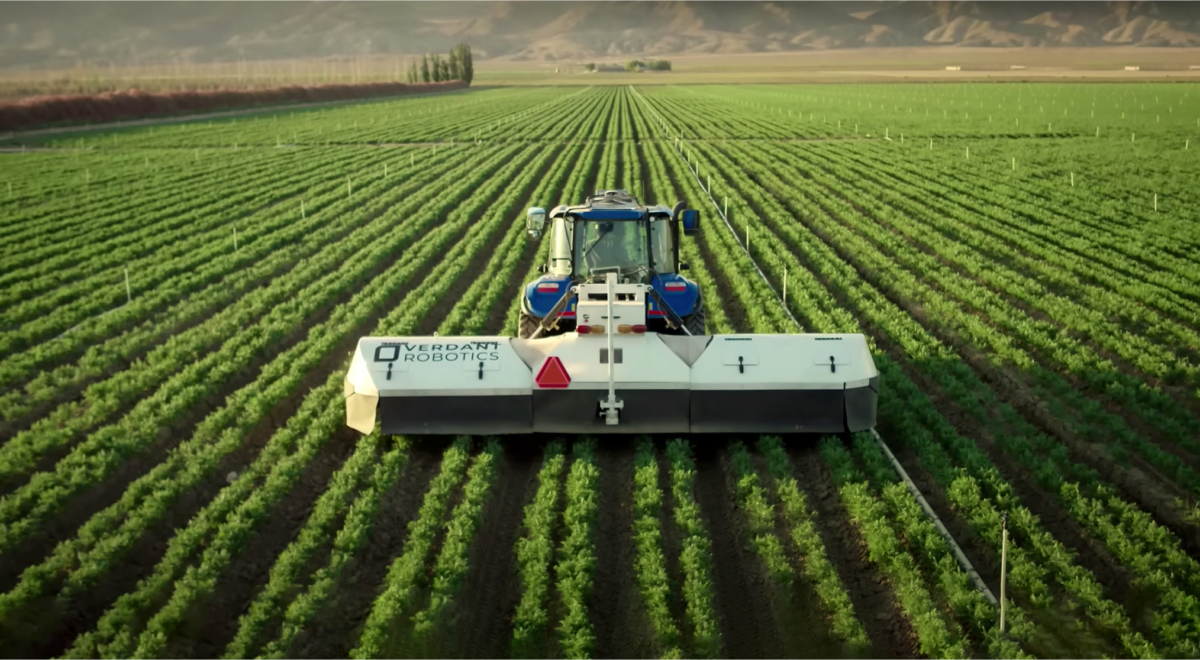Weed Killer Robots

Verdant Robotics, a leading ag-tech company, has developed cutting-edge artificially-intelligent weed killer robots that are transforming crop management.
Verdant Robotics has created a multi-action, autonomous platform that is the only ag-robot in the U.S. market capable of simultaneously weeding, fertilizing, and treating plants for pests and diseases. Passing over a field the robots can specifically target individual weeds and crops at a rate of 20 per second, before blasting them with either de-weeder or fertilizer within a millimeter of accuracy.
The robots use sub-millimeter precision to identify and target individual plants, allowing for the use of 95% less chemicals than traditional spraying methods. This level of accuracy is made possible by a combination of advanced robotics, machine vision, and deep learning algorithms.
“Increasingly folks are turning towards things like cover-cropping again, and inter-cropping and other regenerative agriculture techniques that allow us to keep the soil healthy,” said Gabe Siblev, Founder and CEO of Verdant Robotics, in a mini-doc about their technology. “The challenges there have been that it’s difficult to do this at the same sort of scale that we can do monocropping, which is how we feed the world.”
Related Story: Carbon Robotics’ Autonomous Weeder does one thing even better.
The robots can treat an impressive 500,000 plants per hour, significantly increasing the speed and efficiency of farm operations. Furthermore, these advanced robots, such as the SprayBox, don’t just treat a plant and move on. Instead, they meticulously construct a centimeter-by-centimeter map of the entire field, including the geolocation and identification of each plant. This extensive data collection is vital in implementing regenerative agriculture on a large scale, which would otherwise require a substantial workforce.
Because of the mapping and precise targeting, this could potentially enable the large scale growing multiple crops on the same field. Doing this at a monocropping scale would be huge for utilizing regenerative farming techniques. “Ironically, it’s kind of returning to how we farmed you know, 100 years ago. Unlocking knowledge that a lot of older growers have, and bringing it back through technology,” said Siblev.
As the demand for food increases and the need for sustainable farming practices becomes more pressing, the adoption of these advanced technologies will be essential in meeting the challenges of the future.
It is well worth watching the thing in action, it almost looks like a video game.